How a Northwest tribe is escaping a rising ocean
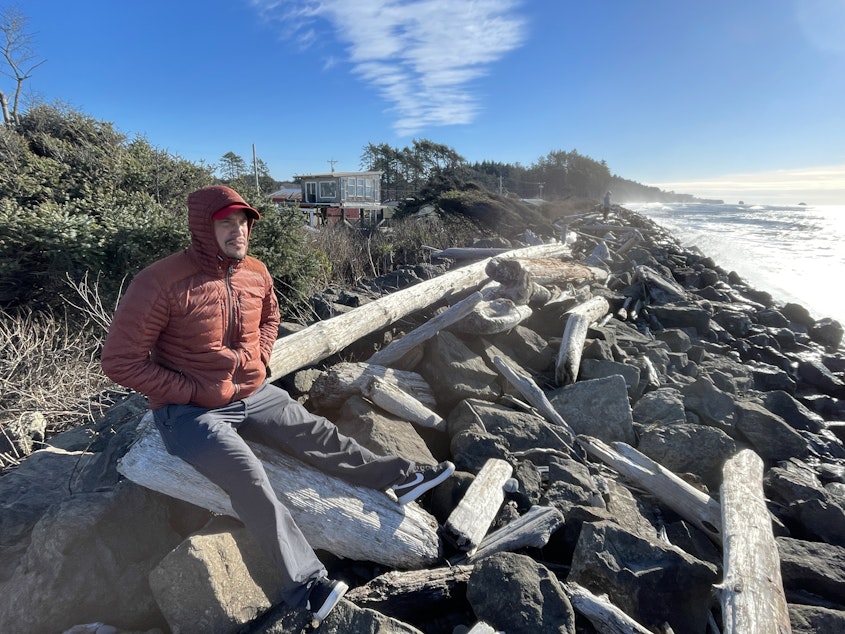
In a mossy stretch of forest on Washington state’s outer coast, streets and sidewalks have appeared in recent weeks.
They represent the future of the Quinault Indian Nation, which has spent a decade trying to move its villages out of reach of a rising Pacific Ocean and its tsunamis.
It's an approach many communities might need to embrace as Earth's climate keeps warming and seas keep rising.
Where the Quinault River empties into the Pacific, a seawall of massive boulders protects the Quinault Reservation village of Taholah from pounding waves, but it's not always up to the task.
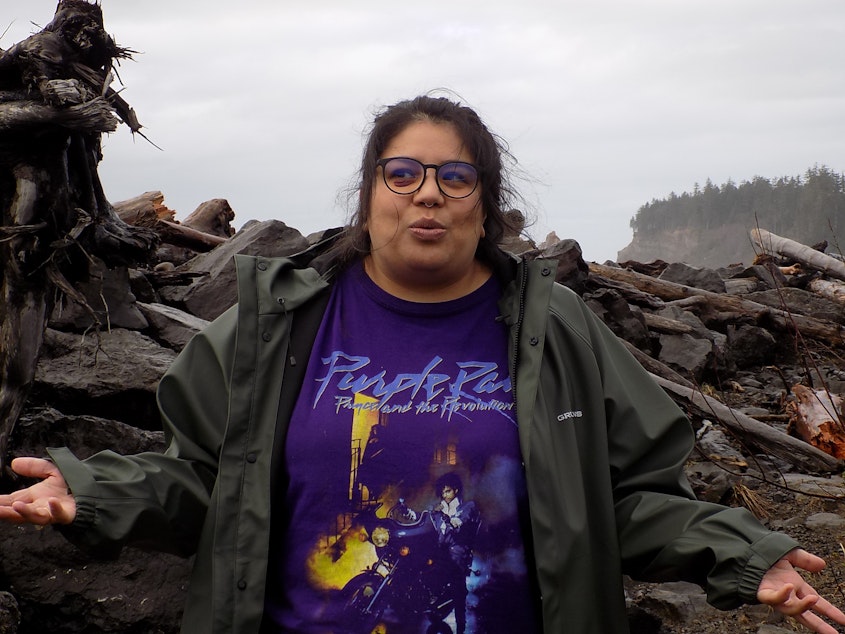
“It is inevitable that my street will be in the ocean at some point,” Lia Frenchman said. The Quinault tribal member and historic preservation officer lives with her partner and two kids in a modular home perched on cinder blocks in the shadow of the seawall.
“At high tide in the winters, the waves will come over, my backyard will fill with water, and you'll see the water running under my house, out into the street,” Frenchman said. “Like, I'll have a full current going.”
Each November, December, and January, the highest tides of the year, known as king tides, threaten to flood the low-lying village of 800 people, the largest on the Quinault Reservation. Waves deposit hulking driftwood logs on top of the seawall and, occasionally, into people’s backyards.
“There's a few new ones today, even,” Frenchman said.
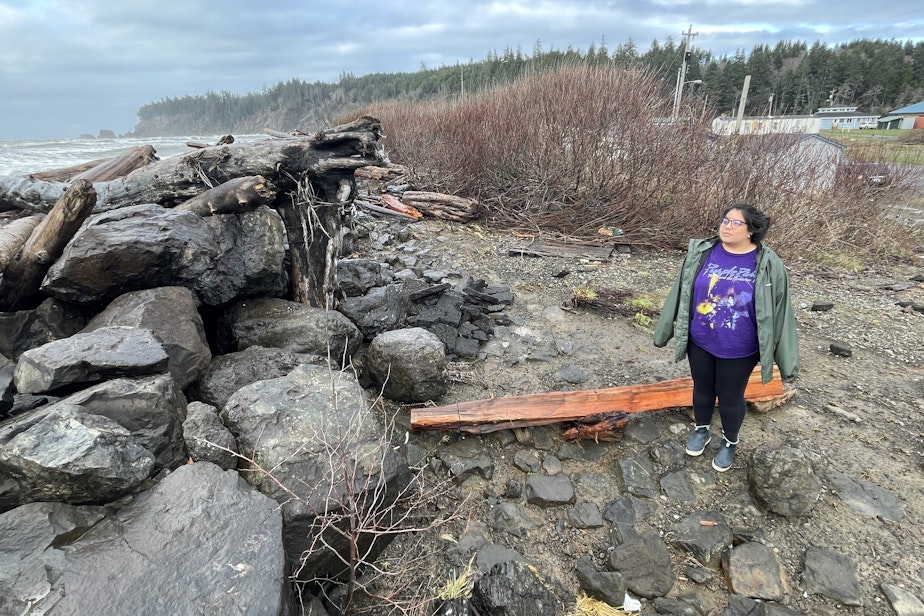
Tidal flooding forced the evacuation of Taholah in 2022, with the tribal government putting up elders at its casino 25 miles down the coast.
Frenchman knew the hazards of living by the seawall when she bought her home in 2020, but housing is scarce in Taholah. Some four-bedroom homes house up to 20 people.
“We just made the most of this little home that became available and had to also make the choice to move onto this street, which is the most susceptible to flooding,” she said.

When big waves hit the seawall at high tide, Frenchman’s home shakes.
“It just vibrates, like a little mini-earthquake constantly, for a few hours,” she said.
Should a major earthquake hit the Cascadia Subduction Zone just offshore, or other seismic hotspots around the Pacific Rim, most of Taholah could be inundated by a tsunami.
“My kids’ schools, they're all sea level,” Frenchman said. “They're all in the flooding zone.”
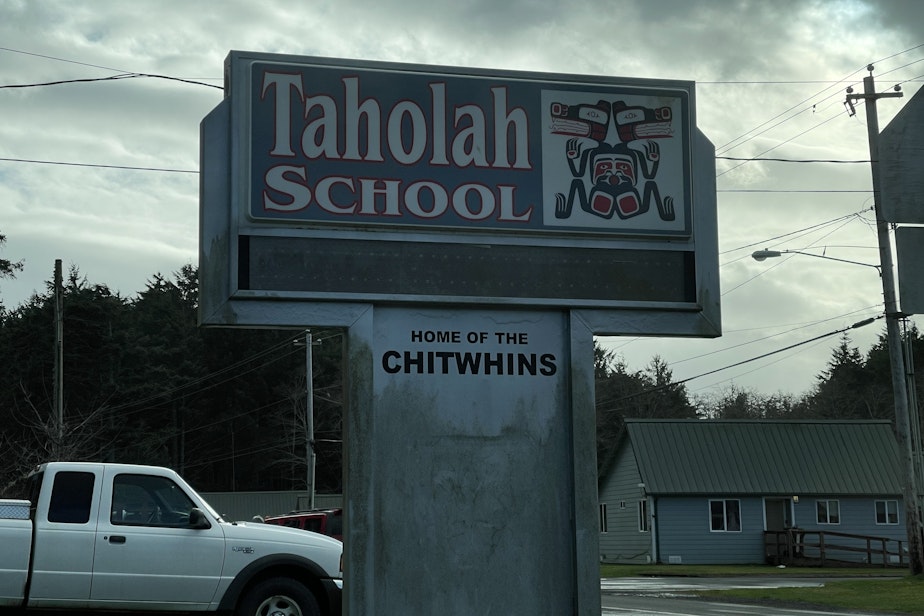
Oceanographers say king tides in Taholah and elsewhere give a sneak peek of the future as an ever-hotter climate swells the world’s oceans. Global sea levels have risen about seven inches over the past century due to heat-trapping pollution, with a similar rise forecast in just the next 30 years.
Taholah has done more to confront that hotter future than most places in the U.S.
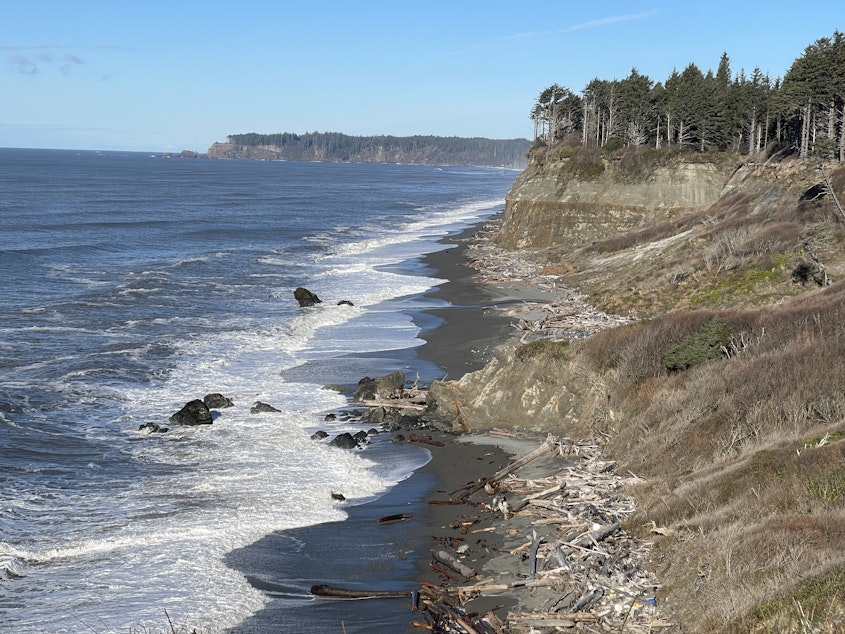
In December, the Quinault government reached a milestone in its long push to provide safe housing for its people.
“You're looking at about nine acres of fresh development, with asphalt and sidewalks and lots of open space to start building some houses,” tribal council member Ryan Hendricks said behind the wheel of his pickup truck. “What I see is, I see a really nice start of relocating a village.”

There are no houses yet, just a figure eight of streets, sidewalks, and underground utilities carved out of the tribe’s lichen-draped timberlands. The upland site with lots for 59 homes is about a mile from the lower village and 130 feet above sea level.
“I'm excited to see tribal members cruising around up here in anticipation,” said Hendricks, who used to manage the construction project before being elected to the tribal council.
While fully relocating the village is expected to take at least another decade, tribal officials hope the first Quinault elders can begin moving into new homes in the next year or two.
“It's a big project for such a small group of people to take on,” Hendricks said.
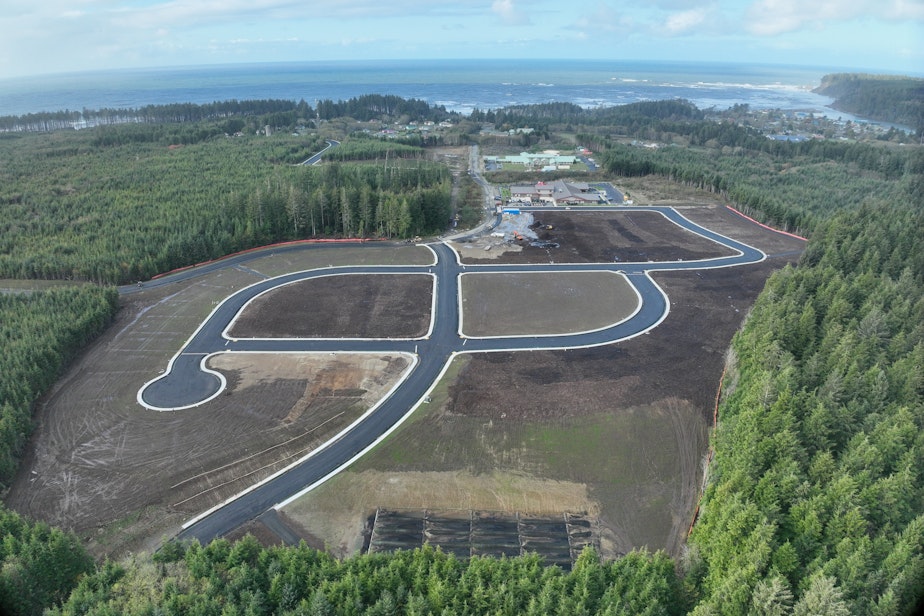
The village is named for Chief Taholah, who signed the Treaty of Olympia with the United States in 1855, surrendering most of the Quinault's and neighboring tribes’ land, but retaining their fishing, hunting, and other rights. Today, the Quinault Reservation covers about 200,000 acres, a lush, mostly forested area bigger than New York City, but with just 1,200 residents.
Per-capita income on the reservation is low, about half the national average. One in three people there live below the federal poverty level.
Tanya Eison-Pelach wanted to move back to Taholah after she finished graduate school in Seattle, studying ocean policy.
“I do wish that I could have moved back into the home that I love so much, but I realized that that's not a place that I would feel safe raising a family,” said Eison-Pelach, who works on natural resources policy for the Affiliated Tribes of Northwest Indians.
She now lives off the Quinault Reservation, about 10 miles from her home village and outside the danger zone for flooding.
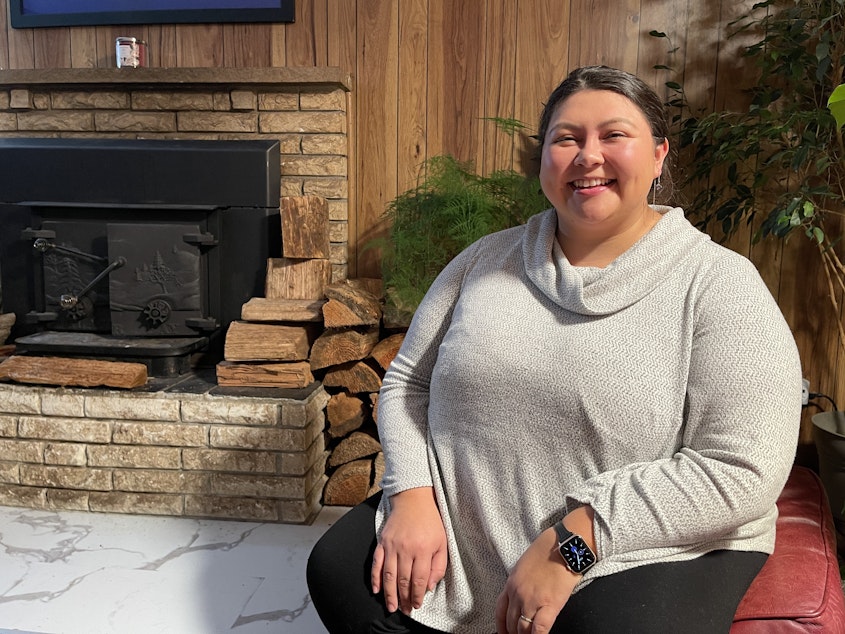
“I do love Taholah,” she said. “I just feel so far away now.”
Eison-Pelach said tribes like the Quinault are on the front lines of climate change. “We’re trying to solve a problem we didn’t create,” she said. “We didn't create carbon emissions to any level of, like, the outside, non-tribal world.”
The Quinault government has received millions in state and federal funds to relocate the village. It has spent millions from its own timber and casino operations. With the project expected to cost at least $450 million, the tribe still needs hundreds of millions to get homes built in the new neighborhood.
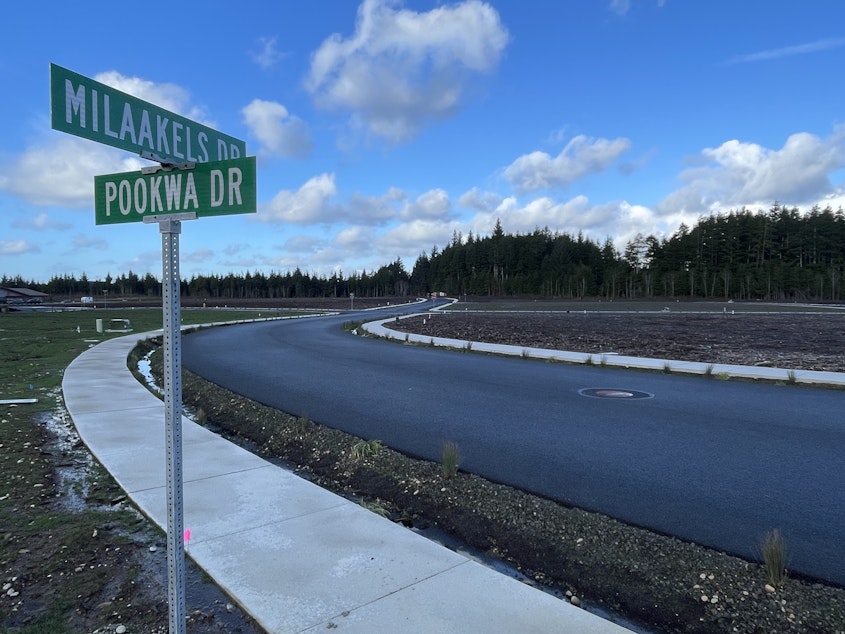
“It's been a long process,” Quinault Indian Nation President Guy Capoeman said.
“We've had to do a lot of convincing to get some of our folks to agree that it's best to move up on the hill,” he said.
Tribal members report having mixed feelings about relocating away from the mouth of the Quinault River, the salmon-bearing heart of Quinault culture.
“That river down there has been keeping us alive for thousands of years,” Hendricks said.
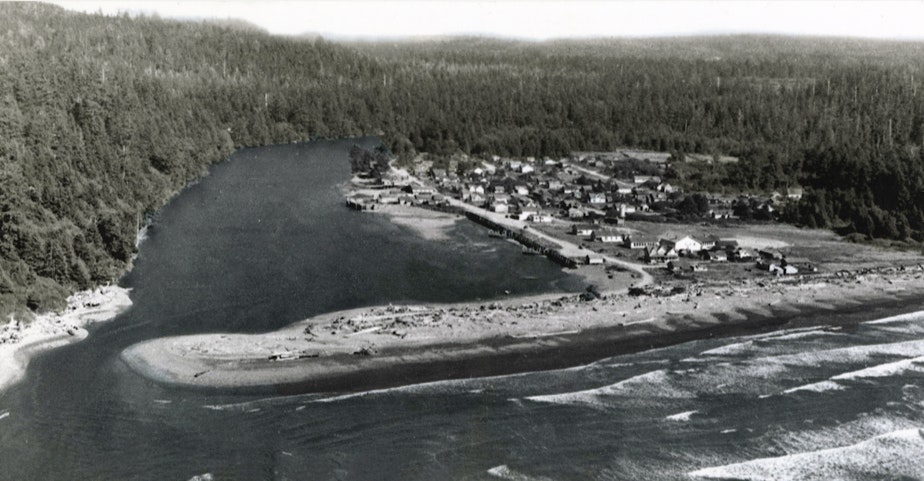
Capoeman says he hasn’t decided whether he’ll move away from the lower village.
“At my age, I'm 54, the thought of taking on a home loan is something that is, you know, it's a big investment,” Capoeman said.
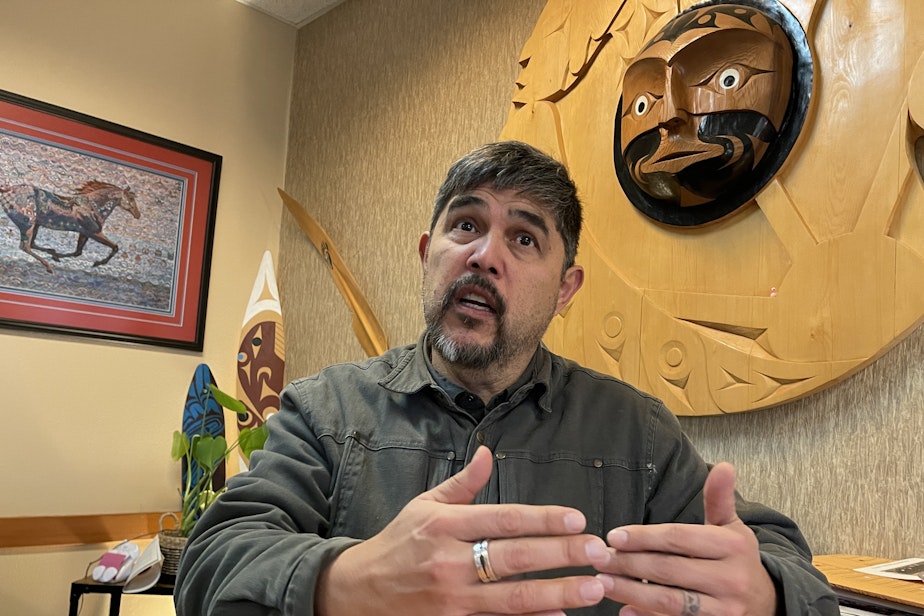
Eison-Pelach said there’s a generational divide, with some elders doubting the move will be necessary in their, or their children’s, lifetimes.
The divide has fueled tense discussions in her own family, about what to do with the family home in the lower village.
“No, Mom, we shouldn't put $15,000 into this because it's gonna get washed away,” Eison-Pelach said.
Lia Frenchman said she looks forward to moving uphill and protecting her family from the rising ocean. Still, she said she’ll miss the sounds of the surf and eagles overhead.
“I hear them whistling all day. My heart just breaks when I think about not being near that anymore,” she said, fighting back tears. “I know it's, at the same time, not reasonable and not safe. But it's a hard thing to accept.”

Other coastal tribes in Washington and Alaska are looking to relocate villages made vulnerable by rising seas, though few have made as much tangible progress as the Quinaults have.
“We've always made a point to be at the forefront of emerging concerns that affect Indian country, [like] climate change,” Capoeman said. “We see that these things are real.”
Elsewhere, the Quinaults’ approach, sometimes called “managed retreat,” has been controversial, even at the scale of individual backyards or homes. Coastal property owners often prefer higher seawalls or stronger engineering to try to hold back a rising sea over relocating or abandoning valuable waterfront real estate.
“There are lots of examples of places that no longer exist on the map, so this has happened before,” said oceanographer Ian Miller with Washington Sea Grant at the University of Washington. “There are not too many instances of it happening in this kind of planned, managed, coordinated way.”
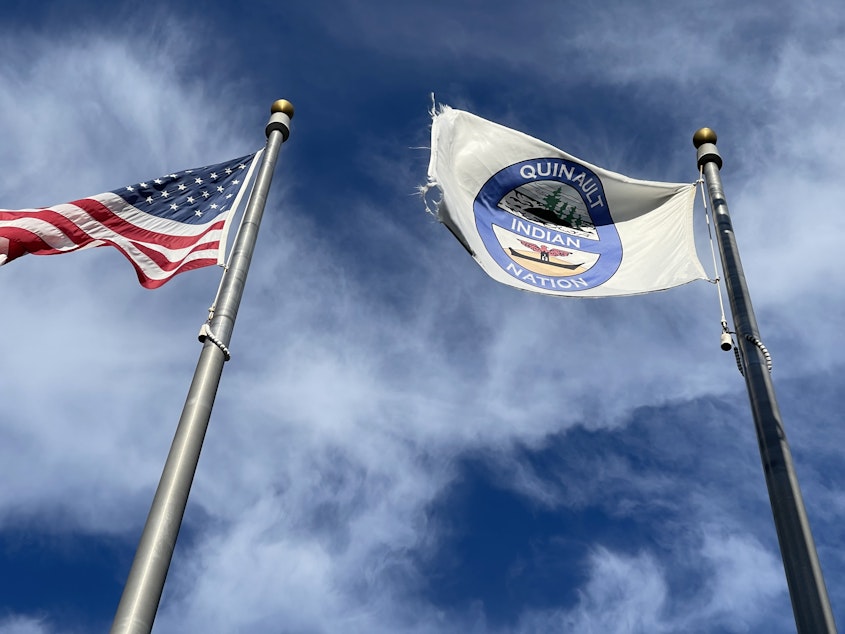
In 2020, the Bureau of Indian Affairs estimated U.S. tribes would need $5 billion over the next 50 years to relocate or otherwise protect their infrastructure from climate change, with the greatest need in Alaska.
The Biden Administration in 2022 issued multimillion-dollar grants to tribes in Alaska, Louisiana, Maine, and Washington, including the Quinault, that are looking to move to higher ground.
The Quinault Nation was turned down for three federal grants in 2023 but received a $2 million U.S. Department of Housing and Urban Development grant in February 2024 to help build housing for elders at the upland site.
Quinault officials still have to raise millions more to fill an empty neighborhood with homes. They also have to decide how to divvy up relocation costs fairly among tribal members.
“If you know anybody with a big checkbook, give them my name,” Capoeman said.
Frenchman said she’s dreading having a house payment again and that it’s going to be hard to abandon a site with so much history to it.
“But you know, you do what you have to do to protect your family,” she said.
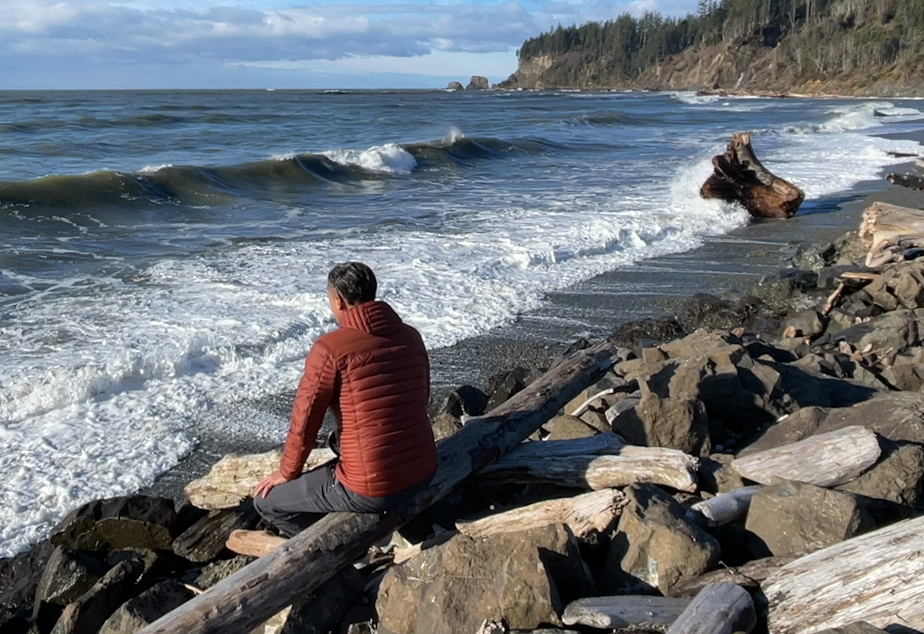
 22 secs
Quinault Tribal Council member Ryan Hendricks sits on driftwood atop the seawall that protects Taholah, Washington, on the Quinault Indian Reservation, on Jan. 12, 2024.
22 secs
Quinault Tribal Council member Ryan Hendricks sits on driftwood atop the seawall that protects Taholah, Washington, on the Quinault Indian Reservation, on Jan. 12, 2024.

